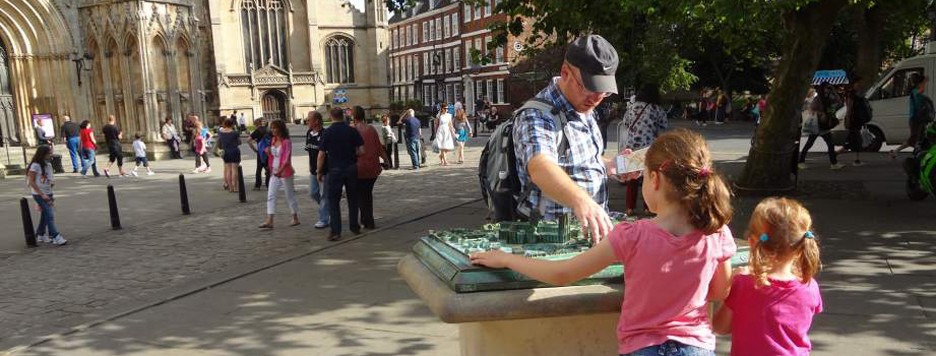Associate Consultant Caroline Lewis has worked as a trainer with the Centre for Accessible Environments (CAE) since 2016. Her particular specialism is access implications within the pedestrian environment for people with vision impairment.
Read on to learn about her vision of a post-Covid-19 world for disabled people and why she thinks design professionals require increased professional development and training when it comes to accessibility in the built environment.

CAE Associate Consultant & Trainer, Caroline Lewis
How do you define inclusive design and accessibility?
The definition of inclusive design which I like to use was developed by the Chartered Association of Building Engineers at the Design Council. It states that:
- Inclusive design is about making places everyone can use
- Inclusive design is everyone’s responsibility
- Good design is inclusive design.
Essentially, inclusive design places people at the heart of the design process; acknowledges diversity and difference; offers choice, provides flexibility and provides buildings and environments that are convenient and enjoyable to use for everyone.
What are some of the biggest access issues you feel disabled and older people face on a day-to-day basis today?
Our role is to address access issues that occur within the physical environment. Of course, this needs to be considered holistically with other barriers such as assistive technology, policies or procedures that hinder the involvement of disabled people and negative attitudes of people (often due to misconceptions or lack of awareness).
If we can change our thinking towards the ‘social model’ of disability and understand that we all have a responsibility, it becomes easier to identify and address challenges that all people, including disabled and older people, experience.
What do you teach on the Pathways Academy programme?
I’m a co-trainer with my colleague Carol Thomas on six of the Pathways Academy modules. These are External Environment, Stakeholder Engagement, Report Writing, Reading Plans, Train the Trainer and Working in Access.
In what way is the Pathways Academy programme a game-changer for the industry and disabled people?
We have known for such a long-time that we need a greater representation of disabled people within the access profession, but also that we needed to consider more younger people entering. As the access profession is a very small, specialised field and we need to ensure it continues to grow.
We would now like to encourage areas outside of London to run the successful Pathways model and also to widen the age range to the course. Enquiries have shown there is a market for this.
Where to now for inclusiveness and accessibility for disabled people with Covid-19 regulations removed?
The Covid-19 pandemic has drawn attention to the dynamics of ‘vulnerability’ and the implications for disabled people.
It would be nice to think that a more inclusive post-Covid-19 world ensured that disabled people are fully involved in decisions, which impact them.
What do you see as the biggest hurdle facing disabled people in the built environment in the next 5-10 years?
I think it is still a lack of education and awareness of design professionals. This is slowly changing, but we’ve got a long way to go. Design professionals need to take greater responsibility and appreciate that just meeting building regulation standards is not enough.
If you could make one law today regarding inclusive design and accessibility, what would it be?
It would be to have a substantial size body to monitor and enforce the Equality Act legislation that we already have.
It shouldn’t be up to individuals to make complaints in order for something to get addressed. Business and the government need to take more responsibility and be penalised for not acting.
Which CAE project, that you’ve worked on, has made a significant impact in terms of inclusion and access?
I think the most impact for me is made when undertaking training and perhaps changing hearts and minds!
I was so pleased to hear on a recent CAE course that one participant had attended training that I had run in the mid-2000s and then decided to follow a career in inclusive design. She then encouraged her colleagues to undertake the recent CAE training courses. A great example of spreading the word and making change!

